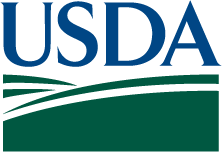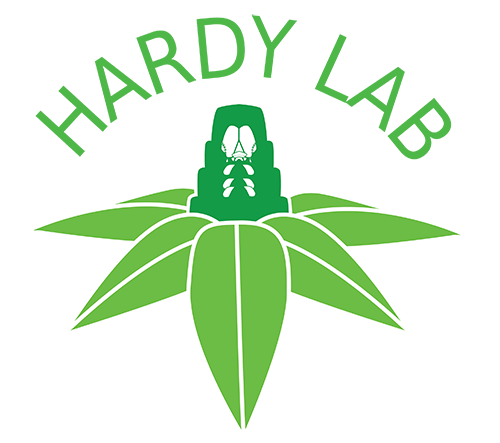Valid Names Results
Phenacoccus herreni Cox & Williams, 1981 (Pseudococcidae: Phenacoccus)Nomenclatural History
- Phenacoccus herreni Cox & Williams 1981: 251. Type data: GUYANA: Cane Grove, on cassava. Holotype, female, Type depository: London: The Natural History Museum, England, UK; accepted valid name Illustr.
- Phanacoccus herreni; Dhaunroo et al. 2019: 1. misspelling of genus name
Common Names
- Cochinilla harinosa amarilla de la yuca KondoWaTa2022
- Herren’s cassava mealybug KondoWaTa2022
- piojo harinoso de la yuca KondoWaTa2022
Ecological Associates
Hosts:
Families: 2 | Genera: 2
- Convolvulaceae
- Stictocardia tiliifolia | LincanHoCa2010
- Euphorbiaceae
- Manihot esculenta | BenDov1994 CoxWi1981 FoldiKo2006 KondoRaVe2008 WilliaGr1992
Foes:
Families: 2 | Genera: 9
- Coccinellidae
- Tenuisvalvae bisquinquepustulata | SantosCaPe2017
- Tenuisvalvae notata | SantosCaPe2017 | (= Cleothera notata)
- Encyrtidae
- Acerophagus coccois | BentoDeBe1999 BertscTuBe1997 CalataAuTh2001
- Acerophagus flavidulus | AcevedRoLo2024
- Acerophagus maculipennis | AcevedRoLo2024
- Aenasius flandersi | KondoWaTa2022
- Aenasius vexans | BentoDeBe1999 BertscTuBe2001 CalataAuTh2001
- Anagyrus diversicornis | BentoDeBe1999 BertscTuBe2001 Blumbe1997 | (= Apoanagyrus diversicornis)(= Epidinocarsis diversicornis)
- Anagyrus insolitus | KondoWaTa2022
- Anagyrus lopezi | KondoWaTa2022
- Anagyrus pseudococci | KondoWaTa2022
- Blepyrus insularis | KondoWaTa2022
- Bothriocraera | KondoWaTa2022
- Homalotylus quaylei | KondoWaTa2022
- Leptomastix epona | AcevedRoLo2024
- Prochiloneurus | GilCoMa2023
- Prochiloneurus argentinensis | KondoWaTa2022
- Prochiloneurus dactylopii | KondoWaTa2022
Associates:
Families: 1 | Genera: 1
- Closteroviridae
- MEaV-1 | AhmedApKa2023
Geographic Distribution
Countries: 12
- Argentina | GranarSz2007
- Bolivia | BenDov1994 GranarSz2007 WilliaGr1992
- Brazil | BenDov1994 CoxWi1981 WilliaGr1992
- Amazonas | FoldiKo2006
- Bahia | BentoDeBe1999
- Paraiba | BentoDeBe1999
- Pernambuco | BentoDeBe1999
- Roraima | BentoDeBe1999
- Colombia | BenDov1994 CarrejBeGo1991 CoxWi1981 GranarSz2007 Kondo2001 KondoRaVe2008 WilliaGr1992
- French Guiana | KondoWaTa2022
- Galapagos Islands | CaustoPeSi2006 LincanHoCa2010
- Grenada | BenDov1994 CoxWi1981 GranarSz2007 WilliaGr1992
- Guadeloupe | MatileEt2006
- Guiana | BenDov1994 CoxWi1981 GranarSz2007 WilliaGr1992
- Guyana (=British Guiana) | BenDov1994 CoxWi1981 GranarSz2007 WilliaGr1992
- Trinidad and Tobago
- Tobago | BenDov1994 CoxWi1981 GranarSz2007 WilliaGr1992
- Venezuela | KondoWaTa2022
Keys
- ParsaKoWi2012: pp.10-Aug ( Adult (F) ) [Key to mealybugs (Hemiptera: Pseudococcidae) recorded on Manihot spp. (Euphorbiaceae) in the World]
- GranarSz2007: pp.41-43 ( Adult (F) ) [Phencoccus species of South America]
- WilliaGr1992: pp.349 ( Adult (F) ) [Central and South America]
- CoxWi1981: pp.251 ( Adult (F) ) [Phenacoccus manihoti group]
Remarks
- Systematics: Phenacoccus herreni is morphologically very similar to P. manihoti; however, in life the two species can be differentiated by the colour of the body, being light yellow in P. herreni and pinkish in P. manihoti. (Kondo, et al., 2022)
- Structure: Body contents of live adult female yellowish; body covered by mealy white wax, with short waxy filaments around body margin. Males are common. Phenacoccus herreni can be diagnosed by the following combination of features: 18 pairs of cerarii, each cerarius containing 2 enlarged lanceolate setae, except for some on head with 1–3 enlarged setae; antennae each 9-segmented; claws each with a denticle. (Kondo, et al., 2022)
- Biology: Living on stems, leaves and apices of cassava. The mealybug causes distortion to the growing tips (Cox & Williams, 1981). Jatropha gossypiifolia L. (Euphorbiaceae), a plant species known to contain proteins toxic to insects, exhibited insecticidal properties to P. herreni. The toxic compounds consisting of proteins around 101.02 kDa appeared to be mostly located in the mature leaves. Further studies are needed to identify the proteins and to ensure that they are not toxic to mammals. (Calatayud, et al., 2011)
- Economic Importance: Bento et al. (1999) and Bento et al. (2000) discussed the damage caused by Phenacoccus herreni to Manihot esculenta in north-eastern Brazil, and reported on successful introduction of three species of hymenopterous parasitoids. Hountondji et al. (2002) found that Phenacoccus herreni was not susceptible to Brazilian isolate of the entomopathogenic fungi Neozygites floridana.
- General Remarks: Description and illustration of the adult female given by Cox & Williams (1981), Williams & Granara de Willink (1992) and by Granara de Willink & Szumik (2007).
Illustrations
Citations
- AcevedRoLo2024: biological control, natural enemies, 9
- BellotByHe1985: distribution, economic importance, host, 417-439
- BellotHeVa1985: distribution, economic importance, host, 441-470
- BellotReGu1985: distribution, economic importance, host, 393-416
- BenDov1994: catalog, 323
- Bento1997: biological control, distribution, host, 24
- BentoDeBe1999: biological control, distribution, economic importance, host, 403-410
- BentoMoMa2000: biological control, distribution, host, 355-359
- BertscTuBe1997: biological control, host, life history, 383-395
- BertscTuBe2001: biological control, distribution, economic importance, host, 363-371
- Blumbe1997: biological control, ecology, 225-236
- CalataAuTh2001: biological control, distribution, economic importance, host, 2203-2217
- CalataMuCa2011: chemical control, 649-654
- CalataPoSe2002: biological control, distribution, ecology, host, life history, 163-175
- CalataRu2006: control, distribution, economic importance, host, life history, 1-110
- CarrejBeGo1991: biological control, distribution, economic importance, host, 21-27
- CaustoPeSi2006: distribution, 138
- CoxWi1981: description, distribution, host, illustration, taxonomy, 251-253
- DhaunrWaJi2019: biological control, economic importance, 1
- DornMaBe2001: biological control, distribution, host, life history, 331-339
- DornMaBe2003: biological control, 1-10
- FoldiKo2006: distribution, host, 308
- GermaiDeLa2016: host, list of species, 4
- GranarSz2007: description, distribution, host, illustration, taxonomy, 65,69,76
- HountoYaDe2002: biological control, 61-66
- JansenAl2023: dispersal, host, 29
- Kondo2001: distribution, host, taxonomy, 37
- KondoRaVe2008: distribution, host, 39
- KondoWa2022a: distribution, host, list, 24
- KondoWaTa2022: biology, diagnosis, distribution, host, illustration, natural enemies, 164-165
- Lapoin2015: dispersal, distribution, history, 813
- LincanHoCa2010: distribution, host, 6
- MarottTr1995a: taxonomy, 70-71
- MatileEt2006: distribution, host, 181
- Meurge2011: distribution, 82
- MurthyChRa2025: distribution, economic importance, host, 16
- NamadaUtRa2025: control, economic importance, history, host, 5, 13
- ParsaKoWi2012: taxonomy, 8-10
- PowellDeMo2024: morphology, 8
- Remill1988: distribution, host, 70-71
- SantosCaPe2017: natural enemies,
- Willia1986c: distribution, host, taxonomy, 50
- WilliaGr1992: description, distribution, host, illustration, taxonomy, 367, 368
- WilliaMi1999: ecology, taxonomy, 524


